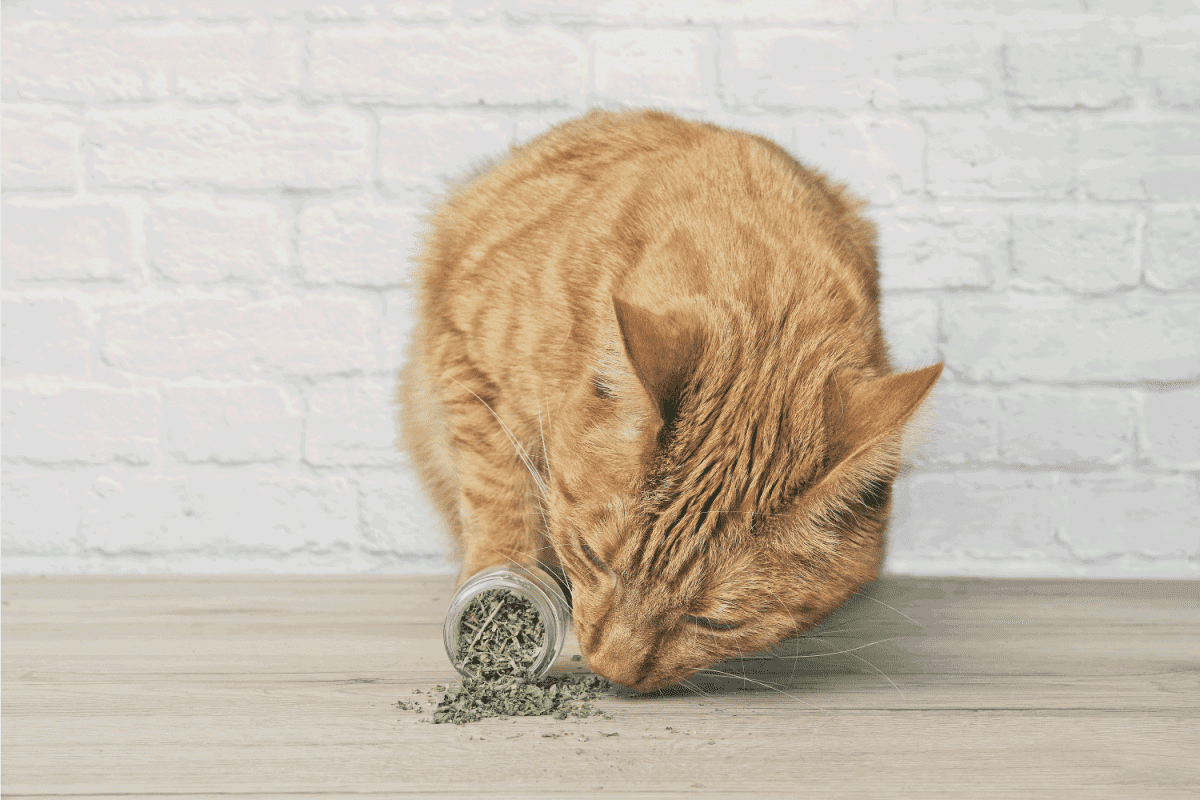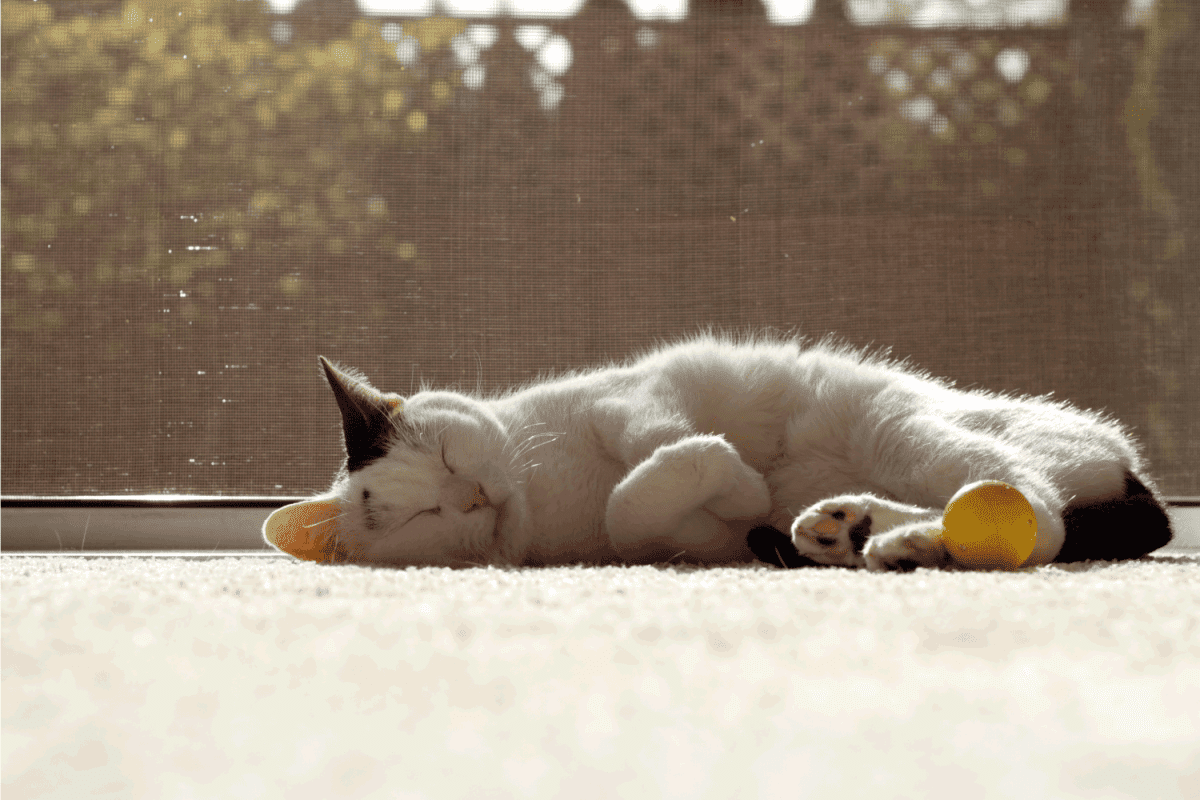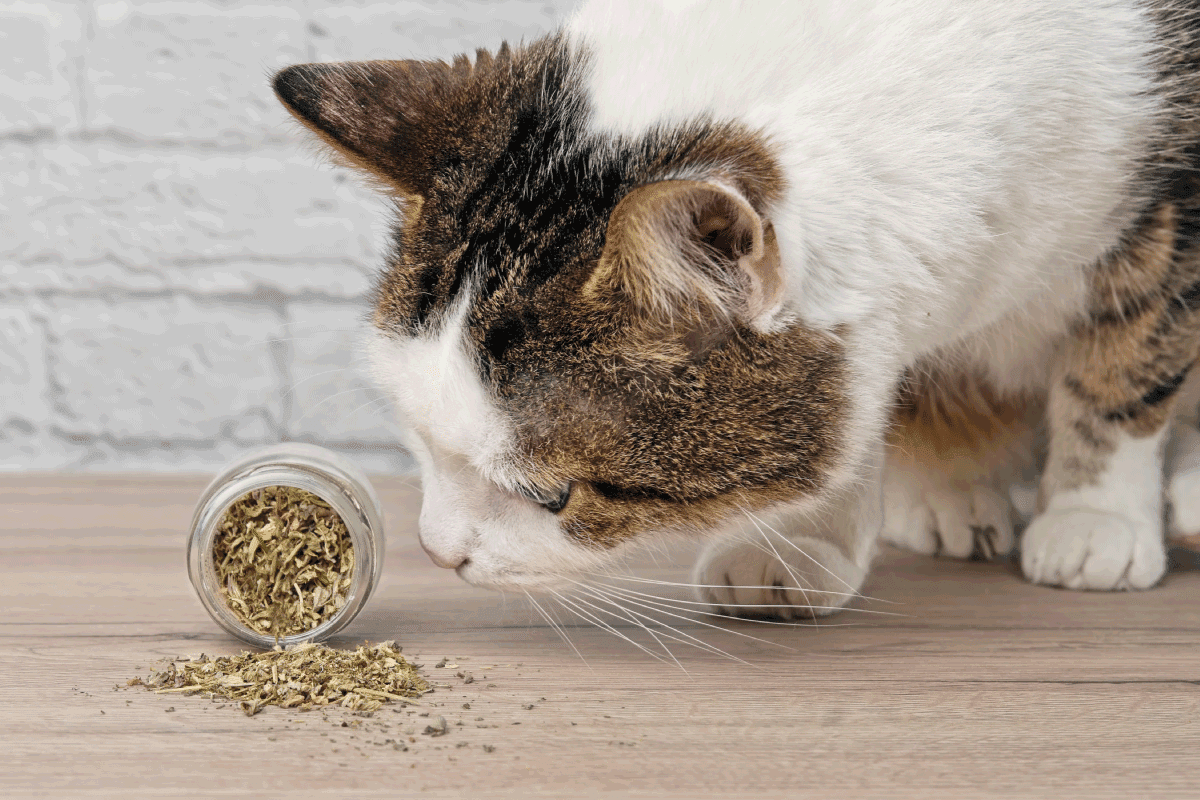Have you ever wondered why cats go wild for catnip? It's a quirky and amusing sight, right?
But did you know it might also have a surprising, soothing effect?
Join us as we uncover the delightful mystery behind catnip - does it truly lull our feline friends into sweet slumber?
Hold on to your tails, cat lovers, as we leap into the fascinating world of cat behavior and uncover the truth about this unique plant's effect on our furry companions.
The Dual Nature Of Catnip: From Euphoria To Sleep
About one in two cats will exhibit euphoria when exposed to catnip. So does that mean that the other half will either be sleepy or depressed?
We looked for answers, and this is what we found out.
The way cats take catnip determines whether the response is stimulating or sedating.
When sniffed, Catnip causes a positive effect for about 10 minutes, manifesting as licking, chewing, or rolling over.
The opposite is observed when catnip is ingested: cats drool, purr, or fall asleep. Non-susceptible cats will have no response at all.
Keep reading to learn more about catnip's effect on cats. But before we discuss further, let's dissect how felines' age and genetics affect their response to catnip.
Factors Influencing Catnip's Effect On Cats: Age, Genetics, And Route Of Consumption
Catnip, which is a member of the mint family, contains an essential oil called nepetalactone.
The substance is contained in microscopic bulbs that coat the leaves, stems, and seeds.
When the bulbs rupture, nepetalactone gets released into the air. How cats respond to the scent will depend on the following:

1. Age
Getting exposed to catnip before 6 months of age may fool one into believing that it has no effect. Kittens less than 6 months old seem to be still immune to catnip.
It is hypothesized that the vomeronasal organ is not fully developed at birth, so sensitive cats may not exhibit a reaction to catnip before reaching 6 months of age.
But by the 6-month mark, you'll be able to tell if the cat responds to catnip.
2. Genetics
Not all cats will react to catnip. Only 60 percent of cats will have a response.
There is also evidence that suggests that this is a dominant trait for cats.
So, if one parent has a sensitivity to the herb, then there's a good chance the offspring will also be sensitive.
However, if they don't respond, other plants can be used to stimulate your cats.
You can either give them another plant called silvervine or a shrub called Tatarian Honeysuckle or your favorite herbs— rosemary and peppermint.
3. Route Of Consumption
Cats can either sniff catnip, or they can chew and swallow the herb. The way they ingest the active ingredients matters.
The Intriguing Dynamics: Sniffed Catnip vs. Ingested Catnip
Catnip is a Stimulant When Sniffed
When your cat sniffs the oil, it interacts with the receptors in their nose, stimulating sensory neurons in the brain.
The trigger alters the activity in the brain, mainly in the amygdala and hypothalamus.
It is now hypothesized that the substance behaves like pheromones by mimicking its shape when binding to the nasal receptors.
Once stimulated, the cat has a euphoric experience for about 10 minutes and then becomes calm.
For the next 30 minutes, they behave in a stupor-like manner. Re-stimulation with catnip will not produce any further reaction.
Catnip Can Be A Sedative When Eaten
Although no explanation can be found to explain the sedating effects, nepetalactone has sedative effects when ingested.
It causes fatigue when eaten, leading to sedation that makes cats sleepy.
Exploring Catnip's Role: Environmental Enrichment And Pain Relief
Catnip is considered to be environmental enrichment. It can provide a quick behavioral jerk to energetic cats, so they don't become bored.
Catnip can also make timid cats more playful.
It is also a good stress reliever in situations that may make them agitated.
It's also believed that catnip can also provide some pain relief based on how humans use it as a spasmolytic.
It may also have some mild hallucinatory effects, which explains why you might see them dodge or bat at the air even if nothing is there.
But either way, the effect only lasts about 10 minutes to an hour. Afterward, the cat reverts to its normal state. They may need at least 2 hours to become susceptible to the effects of catnip again.
Consult with your veterinarian on the frequency and amount you can give since overindulgence can cause your cat to get sick.
Understanding the Sedative Effect of Catnip on Cats

As mentioned earlier, catnip can cause the cats to sleep when you let them ingest the herb.
But don't give them catnip alone; mix it with their favorite dry food.
For more information, check out this post: Can I Put Catnip In My Cat’s Food?
Delving into Catnip’s Human Benefits: Aid for Sleep and More
The leaves and flowers of catnip have long been used to treat insomnia, anxiety, and headaches.
The roots, on the other hand, may act as a stimulant. It's commonly ingested as tea.
Other conditions that it is believed to affect include nervousness, indigestion, cramping, and gas.
It can also affect uterine tissues; it has been used to promote uterine contractions to expel the placenta during delivery.
Catnip tea's potential side effects may add to its effectiveness in inducing sleep.
Individuals who have taken it have been observed to manifest drowsiness.
But drinking it too close to bedtime can cause you to use the bathroom more frequently. So, consider drinking it at night but not before going to bed.
Catnip Tea Preparation: A Guide for the Curious
In a cup of boiling water, add two teaspoons of dried catnip leaves or flowers.
Stir in lemon juice and honey and let it cool for about 10 to 15 minutes.
Then, you can enjoy its woodsy, almost grassy taste. Adding lemon will make you also appreciate its minty flavor.
Catnip As An Anxiety Soother For Your Feline Friends
Not only can catnip encourage play, but it can also calm and soothe the cat in situations that can cause anxiety.
In situations like going to the veterinarian, traveling, introducing a new pet, or when having urinary problems, catnip can provide temporary relief.
Ideally, give it 15 minutes before the vet visits or traveling. Make the cat ingest it rather than sniff it to ensure they are mellowed.
So as not to over-provide catnip, you can also consider giving other herbs. Valerian herb can also produce the same effect as catnip.
Chamomile flowers may also be used, as animal studies have suggested they act like anti-anxiety drugs in the brain.
Can Cats Get Addicted To Catnip?
Cats don't become addicted to catnip. The "high" that your feline friend gets from catnip is temporary and has no long-term effects on their brain or body.
The duration only lasts for a few minutes. Once the essential oil has lost its effect, the cat is back to normal.
Overindulgence In Catnip: The Potential Hazards
Ingesting too much catnip has not been entirely harmful to cats and kittens.
However, giving them too much mimics poisoning, as cats often have diarrhea and vomiting, leading to lethargy.
This is often observed when they ingest a lot of quantity of catnip at any given time.
Therefore, you should be mindful of how often you give your cat catnip as well as how much you give them.

A Final Word On Catnip: When To Seek Your Vet's Advice
Catnip can be your go-to remedy for making your cats either active or sleepy.
In general, sniffing catnip will make them happy and excited.
But giving it to them together with their food will calm them in stressful situations like taking them to the vet, traveling, or introducing a new pet.
If you consider giving your cat this herb, it is always advisable to talk with your vet. It is essential to determine the frequency and amount that you give them.
If you would like to learn more about catnip, look into the following posts:
How Often Should You Give Your Cat Catnip?
Catnip Ingredients: What Does It Contain?

Some elements on this page may have been created by our team using advanced AI to provide you with top-notch cat inspired ideas. Read more about our AI Content Policy.
